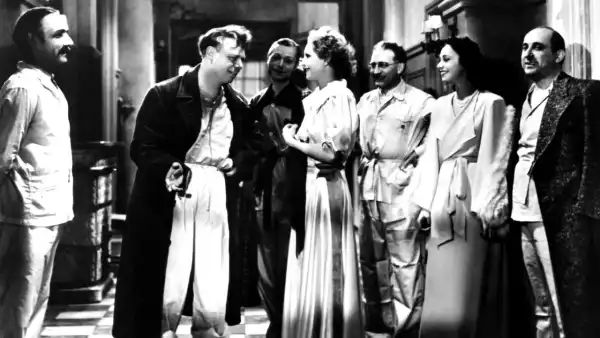
Save this storySave this storySave this storySave this story
Even if Mozart’s name and the quotation from Beaumarchais’s play The Marriage of Figaro had not appeared in the credits of The Rules of the Game, Jean Renoir’s 1939 film would still be the closest thing to a Mozart opera—or, more accurately, The Marriage of Figaro—that has ever been brought to the screen. Like Beaumarchais’s Mozart adaptation, Renoir’s film depicts the intertwined romantic complications both among the upper classes and between him and his hired help, the subtle tricks used to conceal them, and the chaos that ensues when the truth emerges. Like the opera, the film combines these varied moods and tones into a blistering rhythm: farce and piercing melodrama, exquisite lyricism and self-satisfied boastfulness, witty satire and bitter tragedy. (The film, restored in 2021, is showing for a limited time at the Paris Theatre as part of a series called “Punch Up: Uppercuts to the Upper Crust,” starting August 1; it is also streaming on the Criterion Channel.)
Yet to call The Rules of the Game Mozartian would be understatement if Mozart’s opera were not understood in its entirety: The Marriage of Figaro (like Don Giovanni) is a vivid, indignant denunciation of the predatory power of the aristocracy, as represented in the crime of rape. Count Almaviva seeks to exercise his droit du seigneur over his wife’s maid, Susanna, who is engaged to his valet, Figaro. The pair join forces to outwit the Count, whose final revelation leads to a broader revelation—of a regime of lies, of class and gender oppression (women of all statuses are persecuted, betrayed, or deceived), and of relationships warped by submission to or resistance to unjust authority.
Similarly, in The Rules of the Game, Renoir boldly explores an often brutal, invariably sly, and at the same time passionately indignant vision of French society of his time, which he sees as rotting under the weight of a social order designed to protect privileges of various kinds. Renoir’s film also relies on sexualized violence, although in a different context than Figaro. Here, the authorities do not directly engage in violence but tacitly condone it in order to maintain the order on which their privileges rest. In other words, The Rules of the Game, released less than two months before the outbreak of World War II, presents a vision of impending catastrophe, of the authoritarian threat from within as well as without, and of the diabolical complicity of France’s privileged classes, both aristocratic and bourgeois, in the evil acts committed in their name and for their benefit.
Like Mozart, Renoir’s raw energy offers a fascinating journey into an enchanted hell on earth – and tempts the audience with its temptations. The plot, inspired by Alfred de Musset’s 1833 play Les Caprices de Marianne, is at once intricate and simple, with clear but multifaceted relationships that create complications through intersecting conflicts of personal interests and social norms. Finally, one can admire both the sophistication of Renoir’s narrative juggling and his conceptual audacity, in which he captures the powerful storms of history with romantic filigree. A famous young aviator, André Jurieu, is in love with a sophisticated Austrian émigré, Christine, who is married to an aristocrat named Robert de la Cheynieste. Robert has a mistress, a Parisian socialite named Geneviève, but he ends the affair because he fears losing Christine to André. He and Christine are planning a weekend hunting trip, complete with party, at their chateau in the Loire Valley. Their friend, former musician Octave, persuades them to invite André to prove the innocence of Christine’s friendship with him and to cool his reckless ardor. Meanwhile, another plot is unfolding downstairs, involving Christine’s maid, Lisette, who is married to Robert’s gamekeeper, Schumacher. Robert impulsively hires a poacher named Marceau, Schumacher’s sworn enemy, as a servant; once at the chateau, Marceau brazenly pursues Lisette, provoking Schumacher’s violent jealousy.
The film’s political implications are woven into the film itself and into its highly volatile release history, which Pascal Mérigeau carefully tracks in his excellent biography of Renoir. Renoir made the film—his twenty-second and thirteenth sound film—on his own, with his own production company, and it was released on July 8, 1939, with a running time of ninety-eight minutes. This version is lost. Renoir, stung by bad reviews and poor box office results, cut the film radically while it was still in theaters, cutting eighteen
Sourse: newyorker.com